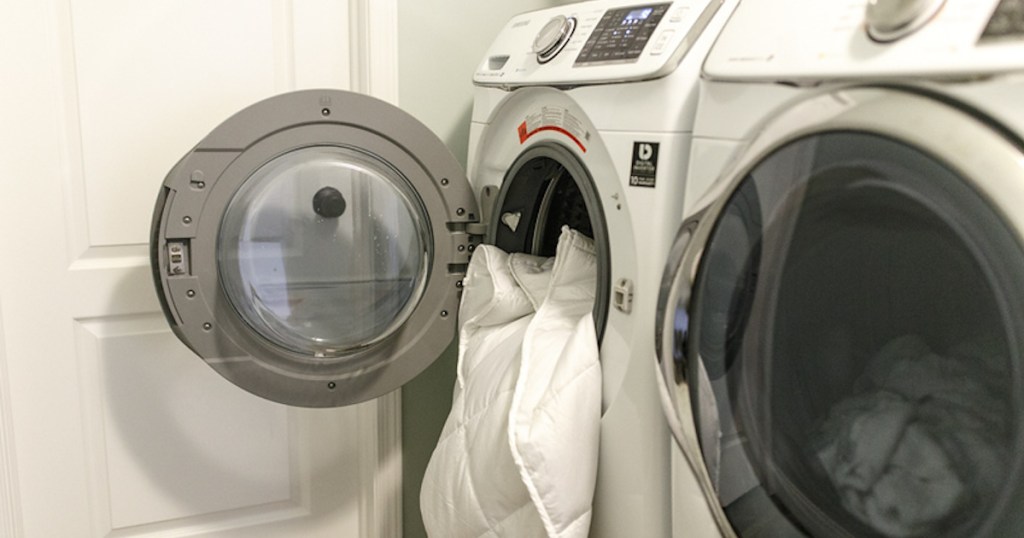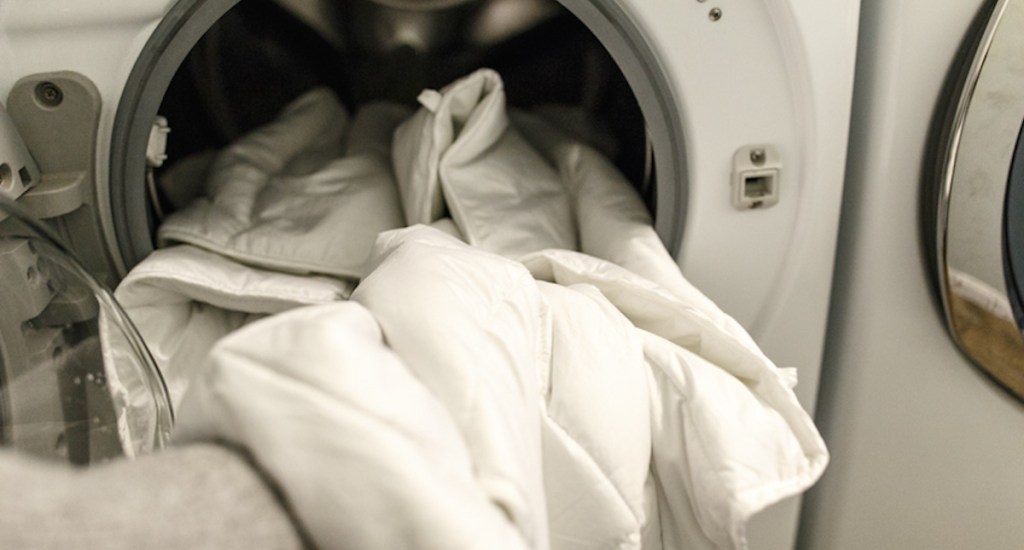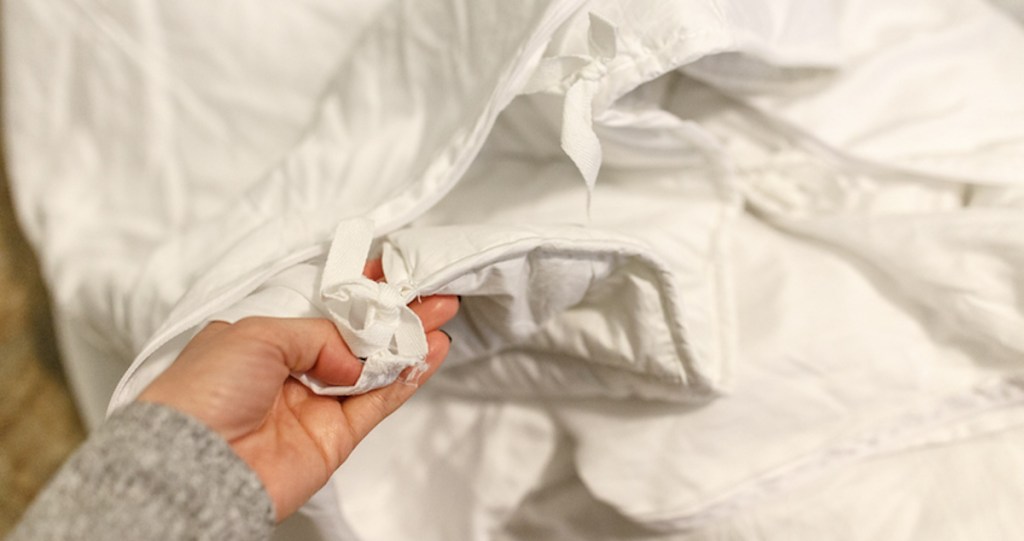Important Tips To Clean and Care for a Weighted Blanket
Positive vibes all around!
I recently fall in love with my new weighted blanket and whether you own a weighted blanket already or are still thinking about it, they’re definitely not your typical blanket! That said, with these important tips, you’ll know just how to clean and care for your weighted blanket!
Hip Tip: While there’s no expiration date for weighted blankets, how long your blanket serves you depends on the fabrics, fillers, and how well you care for it. Even less expensive weighted blankets could last upwards of 10 – 15 years.
1. Check the washing instructions before you buy.
Spills, messes, and bodily fluids inevitably make their way onto a weighted blanket. Before you invest in a weighted blanket, it’s important to know if it needs to be dry cleaned or if it can easily be cleaned in your washer at home.
Hip Tip: You should clean your blanket two to three times per year, even if it looks clean. Don’t wash your heavy blanket too often, as this can damage the filler and reduce your blanket’s lifespan. In between washings, air your blanket frequently to prevent bacteria. Then dust and spot clean as needed.
2. Washing and drying your weighted blanket.
Washing:
This might not be the easiest task in the world, especially if you have a pretty heavy weighted blanket. I recently bought this weighted blanket from Amazon, and as much as I love it, it’s not the easiest blanket to wash at home. In fact, it took my front load washer three hours to complete a normal cycle. 😱
That said, a heavier weighted blanket may need a trip to a laundry mat equipped with commercial-grade washers. When washing your weighted blankets, choose the gentle cycle (many will be washed with cool water). Whatever you do, don’t use bleach. Over time, bleach breaks down the fibers of your blanket’s fabric. Steer clear of fabric softeners, as they build up in the fabric. For weighted blankets filled with gel beads, your only option may be to hand wash.
Hip Tip: While each blanket has its own cleaning and care instructions, here’s a general rule of thumb for washing based on the different fabrics:
- Cotton or Linen-Rayon Blend: Depending on how dirty your blanket is, wash your blanket in cold or warm water.
- Flannel: Flannel tends to show wear and tear more easily, so stick to a cold or warm wash.
- Fleece: Fleece is simple to wash. Use a gentle to mild detergent in warm water.
- Minky: Clean your minky blanket in a cold wash.
- Waterproof: Wash with warm or hot water.
Drying:
Here’s where things can get a little tricky. Most weighted blankets will require air drying. Obviously, throwing a soaking wet weighted blanket over a clothesline outside probably isn’t practical due to the weight. And most of us don’t have an excess amount of space to lay it flat. If this is the case, I would recommend investing in a weighted blanket that can be dried on low in your dryer.
If you already own a weighted blanket that needs to be air-dried, you can drape it over your washer and dryer (as I do) or over a clean bathtub until it’s fully dry. My weighted blanket takes almost a full day to dry, so prepare to go without your blanket for a night after washing.
4. Using a duvet cover with your blanket.
You may have bought a weighted blanket with a removable cover, but you might be asking yourself if you should even use it (or if you need to buy a duvet because yours has no cover). Personally, I love having a cover on mine. It eliminates the hassle of washing the actual blanket as frequently since the duvet cover gets the daily usage. It may not be the easiest duvet to change due to all the loops to keep it in place, but it definitely saves on washing!
Here are some things to think about:
- Cleaning is easier. By adding a cover or keeping the one you already have, you can easily wash the cover without having to throw in the entire blanket.
- Feeling too hot? Adding a duvet cover of any sort is going to add to your blanket’s warmth. Maybe this isn’t an issue if you don’t overheat when you sleep, but if you need a weighted blanket that’s going to keep you cool, a duvet cover isn’t ideal.
- A hassle to change. Weighted blankets can be heavy (some over 20 pounds). While most people tend to buy weighted blankets to relieve stress, placing an extremely heavy blanket in and out of a duvet may only add to your stress in the long run.
If having a duvet cover is important to you, buy a weighted blanket with a cover. We’ve found that searching for a cover with the right amount of loops and the right size is more expensive and pretty difficult.
5. Don’t iron your weighted blanket.
Just envisioning ironing a blanket is a headache in itself. Add the fact that these are extremely heavy, and you have an issue that’s bigger than the blanket itself! That said, weighted blankets are not recommended for ironing since it can damage the filling that makes your weighted blanket so heavenly. If wrinkles get you down, try a duvet cover which can be ironed, or embrace that natural beauty of your new blanket.
In a nutshell, a weighted blanket is an investment in comfort for quality rest. Buy one that you can reasonably care for and take the steps needed to keep yours feeling fresh and new for years of deep, blissful sleep.







Comments 0